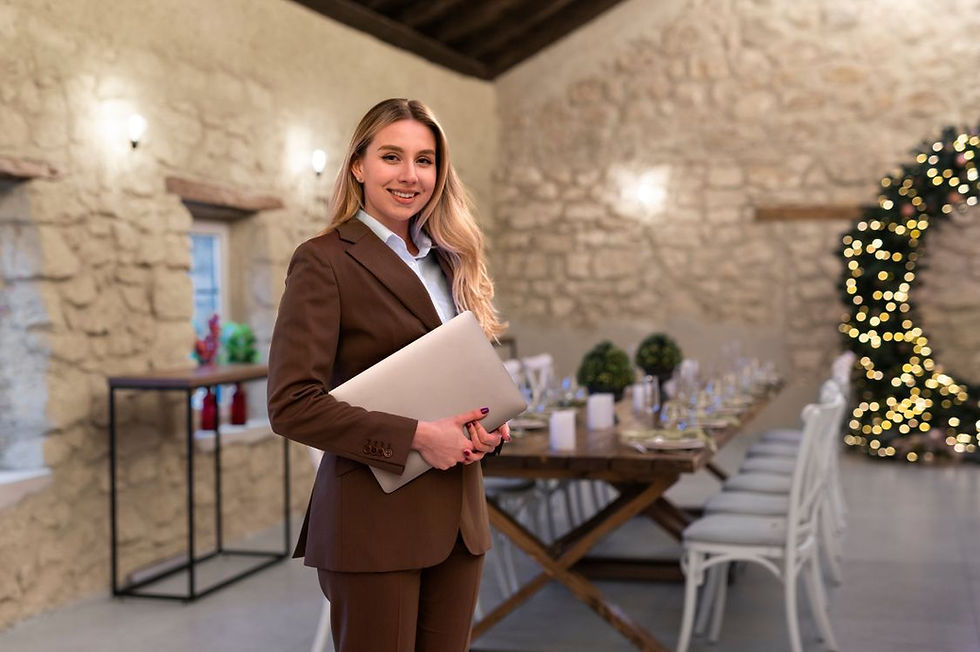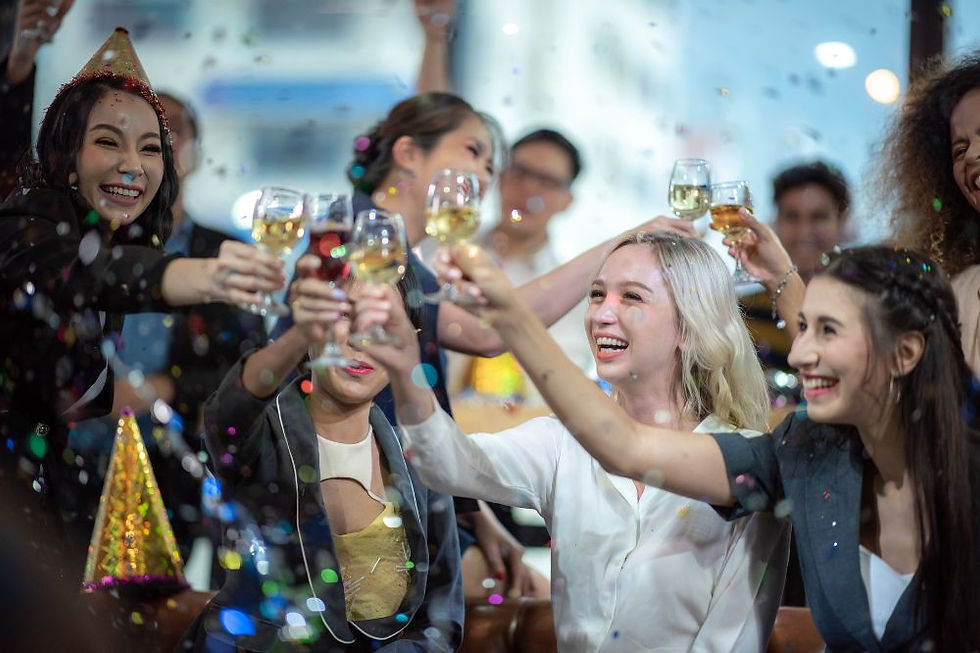From Vision to Reality: The Event Designer's Blueprint
- calisoiree
- May 19
- 4 min read
Planning an event is a lot like painting a picture. You start with a blank canvas and a few ideas, and with each brushstroke—colors, shapes, and textures—you create something beautiful. In the world of event planning, this is what an event designer does. They turn creative dreams into real-life experiences that guests remember forever.

If you're in Sacramento and thinking about becoming an event designer, or just want to learn how these pros create magic, you're in the right place. This blog will walk you through every step, from your first brainstorming session to the final touches on event day. It's a simple guide for anyone who loves creativity, planning, and celebration.
Understanding the Role of an Event Designer
An event designer is more than someone who puts up decorations. They shape the look, feel, and mood of an entire event. Whether it's a wedding, baby shower, or corporate party, their job is to bring someone's vision to life in the most beautiful and organized way. They don't just choose colors or flowers—they think about lighting, furniture, table settings, and how people move through the space. Every little detail matters. So, how do they do it? Let's take a look at their blueprint—from idea to reality.
Step 1 – Brainstorming the Big Idea
It all starts with a conversation. The event designer meets the client to learn what they want. This is the most crucial step. The designer asks questions like:
What is the event for?
What feeling do you want guests to have?
Do you have a theme in mind?
What's your budget?
This helps the designer form a clear picture. Then, they do some creative thinking. They come up with ideas that match the client's wishes and personality. Sometimes, they draw inspiration from colors, nature, seasons, or even a favorite movie. This early stage is exciting! It's where dreams begin to take shape.
Step 2 – Creating Mood Boards and Style Guides
Now that the vision is clear, the next step is turning ideas into something visual. That's where mood boards come in. A mood board is like a scrapbook. It has photos, color palettes, fabric samples, flower ideas, and sketches. It gives the client a preview of how the event might look. Mood boards help in many ways:
They show a clear direction.
They help choose the right decorations.
They make it easier to share the vision with vendors.
A style guide may also be created. This simple document shows what colors, fonts, and materials should be used. It helps keep everything consistent, and this is where the design really starts to come alive.
Step 3 – Choosing the Right Vendors
Once the design is approved, it's time to find the right people to make it happen. A great event designer works with trusted vendors like:
Florists
Balloon artists
Rental companies
Caterers
DJs and musicians
Lighting teams
These vendors help build the experience. For example, if the event needs a beautiful organic garland, the designer finds a skilled balloon artist who can create one safely and naturally. An organic garland is made without using heavy framing or harsh materials. It's eco-friendly, soft in shape, and perfect for trendy, elegant events. This stage takes time, calls, and coordination. The designer ensures that all the vendors know the plan, stay on budget, and arrive on time.
Step 4 – Planning the Layout and Flow
Now comes the logistics. The designer maps out the event space—where tables go, how people will move around, where photos will be taken, and how to keep things organized. They also plan for:
Entrance and exit points
Seating charts
Stage or entertainment spots
Kids' areas (if needed)
Emergency pathways
Good layout planning makes everything feel natural. Guests can enjoy the event without feeling crowded or lost. It's like a hidden magic trick—when it works, you don't notice it, but it improves the event in every way.
Step 5 – Rehearsals and Walkthroughs
Before the big day, a walkthrough is done at the venue. This is when the designer checks:
Measurements
Power outlets
Lighting options
Setup times
Clean-up needs
Sometimes, there's a full rehearsal (especially for weddings or large events). This helps everyone understand their roles and timing. It's a smart way to catch any last-minute problems. A little preparation goes a long way!
Step 6 – Event Day Setup
Finally, the big day arrives. This is where all the hard work becomes real. The event designer and their team get to the venue early. They start setting up tables, flowers, candles, balloons, and more. Every item must be in the right place, exactly as planned. They check:
Lighting
Sound
Cleanliness
Vendor deliveries
During the event, the designer often stays on-site. They manage timing, solve problems, and make sure everything runs smoothly. Their goal is to ensure the client enjoys their event without stress. It's a fast-paced, exciting day, and seeing the final setup makes all the planning worth it.
Conclusion
Turning ideas into unforgettable events is an art and a science. It takes creativity, planning, patience, and heart. Each step in the blueprint matters, from that first meeting to the last piece of confetti swept off the floor. If you're in Sacramento and dream of creating special events, follow this guide. Start with your imagination, organize your process, and bring joy to others through thoughtful design. For those who want expert help bringing their event to life, Cali Soiree offers the care and creativity that make dreams come true.




Comments